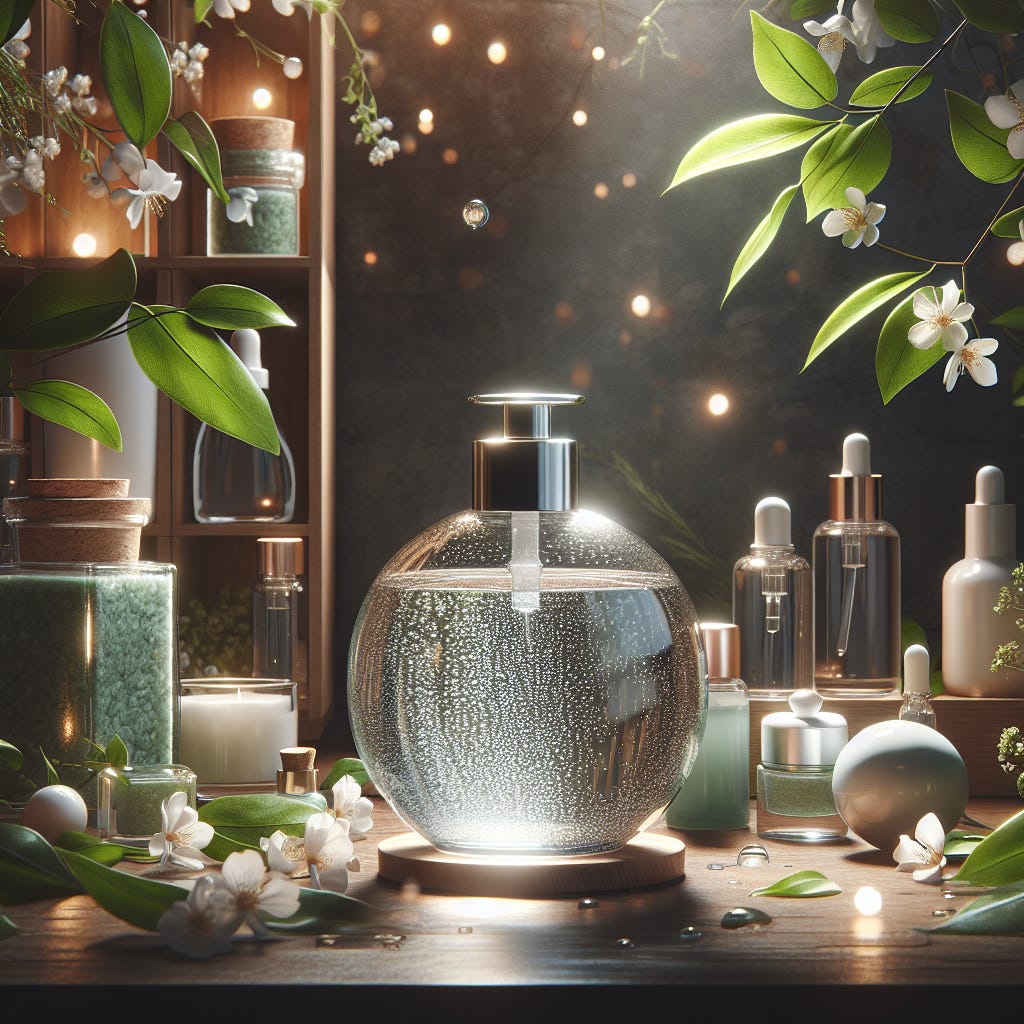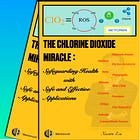This excerpt is from my book, "The Chlorine Dioxide Miracle: Safeguarding Health with Safe and Effective Applications." If you're interested in chlorine dioxide therapy, you can purchase the book here:
13.1 Skin Care and Chlorine Dioxide
Skin care is a broad concept encompassing a variety of methods and techniques aimed at enhancing the appearance, texture, and overall health of the skin. With advancements in medicine and technology, the field of skin care has developed many effective treatments, ranging from everyday skincare products to sophisticated medical beauty procedures. Here’s a detailed look at some key aspects and common methods of skin care.
Basic Skincare: Basic skincare is the foundation of beauty routines. It typically involves three essential steps: cleansing, moisturizing, and sun protection. Proper cleansing helps remove oil, dirt, and dead skin cells from the skin’s surface, preventing clogged pores and skin issues. Moisturizing maintains the skin’s hydration balance, keeping it soft and supple. Sun protection is crucial for preventing premature skin aging and skin cancer, especially from UVA and UVB rays.
Cosmetics and Skincare Products: The market offers a myriad of cosmetics and skincare products containing ingredients like antioxidants, vitamins, plant extracts, and acids (like alpha-hydroxy and hyaluronic acids), designed to nourish the skin, improve uneven skin tone, and reduce fine lines and wrinkles. Choosing the right products should be based on individual skin types and specific skin concerns.
Skin Regeneration Techniques: Skin regeneration techniques such as microneedling, chemical peels, and laser therapy stimulate the skin’s natural healing process and promote the formation of new collagen, improving the skin’s structure and appearance. Microneedling activates the skin’s self-repair mechanism by creating tiny punctures on the surface. Chemical peels use acidic substances to remove dead skin cells, revealing younger, smoother skin underneath. Laser therapy treats skin issues like pigmentation, redness, and scars with specific light wavelengths.
Injections and Fillers: Injections and fillers work inside the skin through medical procedures to reduce wrinkles and skin laxity. Botulinum toxin injections (commonly known as Botox) temporarily reduce facial muscle activity, thus minimizing expression lines. Fillers, on the other hand, involve injecting substances like hyaluronic acid to fill in skin depressions or wrinkles, restoring the skin’s fullness and smoothness.
High-Tech Beauty Devices: With technological advancements, more high-tech beauty devices are hitting the market, such as radiofrequency skin tightening, ultrasonic scalpels, and photorejuvenation. These devices use different types of energy, like thermal, sonic, or light waves, to promote skin firmness and rejuvenation. These treatments are typically performed in professional medical aesthetic facilities.
Natural Remedies: Natural and home remedies are also part of skin care, with many preferring to use natural ingredients like honey, oats, lemon juice, and tea tree oil for skin treatments. These ingredients often have anti-inflammatory, antibacterial, and hydrating properties.
Healthy Lifestyle: Besides external care, a healthy lifestyle is equally important for skin care. A balanced diet, ample sleep, regular exercise, and stress reduction all contribute to maintaining healthy, vibrant skin.
In summary, skincare is a multifaceted process that typically involves the removal of aging cells and the regeneration of youthful skin. Chlorine dioxide happens to serve both these functions. Through self-experimentation, I have found that regular application of chlorine dioxide to the skin can produce noticeable beautifying effects.
I often use chlorine dioxide for experiments or treatments, and there is usually some leftover solution. I tend to apply this excess chlorine dioxide solution to my face, hands, or other parts of the body. I've noticed a significant increase in skin hydration, especially during dry seasons; my skin feels smoother; the skin tone appears more even; and the acne scars from my youth have visibly diminished.
13.2 Skin Care Protocol
A. To prepare chlorine dioxide:
Weigh out 100 grams of sodium chlorate solid (powder form, 80% purity, with the remaining 20% being sodium chloride) and add it to 900 milliliters of deionized water (or distilled water). Heat the mixture to about 50 degrees Celsius until the solid is completely dissolved, then cool to room temperature to create an 8% sodium chlorate solution.
Weigh out 200 grams of citric acid solid (analytically pure, 99.9% purity), and add it to 800 milliliters of deionized water (or distilled water). Heat the mixture to about 50 degrees Celsius until the solid is completely dissolved, resulting in a 20% citric acid solution.
Mix equal volumes of the two solutions prepared above, and wait for about 5 minutes to obtain a saturated solution of acidic chlorine dioxide (approximately 3000 ppm or 3 mg/mL).
B. Storing chlorine dioxide:
Since chlorine dioxide easily evaporates from water, it is generally recommended to prepare it fresh each time it is needed and use it immediately. If you need to prepare a large quantity and store it for an extended period, it is advised to keep it in a glass bottle stored in a refrigerator at 2-8 degrees Celsius.
C. Method of use for skin care:
Gently apply the acidic chlorine dioxide solution to the targeted skin area using an appropriate method. Apply once daily to specific skin areas for no more than 3 days consecutively, after which use can be intermittent as needed. It is important to note that acidic chlorine dioxide can significantly redden the skin and cause a stinging sensation, so if sensitive to this, dilute the solution further before applying.




Very good. I prepare mine differently and use it in a spray every day diluted.
WOW, AMAZING, Thanks a lot!